A Gendered Organizational Analysis of the ... - Campus Activism
A Gendered Organizational Analysis of the ... - Campus Activism
A Gendered Organizational Analysis of the ... - Campus Activism
You also want an ePaper? Increase the reach of your titles
YUMPU automatically turns print PDFs into web optimized ePapers that Google loves.
everyone not in <strong>the</strong> caucus, can continue to meet for as long as it wants. Caucuses, especially people <strong>of</strong> color<br />
ones, <strong>of</strong>ten disrupt a pre-planned agenda and can take six hours <strong>of</strong> discussion to resolve (and undoubtedly have<br />
taken longer in <strong>the</strong> past). Time is not always an issue, and some SEAC NC meetings have lasted twenty-seven<br />
hours without a major break. Thus by emphasizing <strong>the</strong> importance <strong>of</strong> <strong>the</strong> individual over organizational<br />
production, SEAC’s organizational logical functions so as to gender it female.<br />
Reflective <strong>of</strong> <strong>the</strong>ir own and <strong>the</strong> organization’s ideology, SEAC’s members clash with traditional gender<br />
stereotypes in appearance and action. Men are more feminine, more emotional, less dominating, <strong>of</strong>ten having<br />
long hair and occasionally cross-dressing by wearing a long skirt. Women are caught between valuing <strong>the</strong><br />
feminine and being more masculine, but as a stereotype have shorter hair and stronger personalities. This is<br />
ano<strong>the</strong>r way in which SEAC resists traditional assumptions about gender.<br />
Acker’s Third <strong>Gendered</strong> Process: Interactions that ‘that enact dominance and subordination’<br />
Acker’s third gendered process is “interactions between individuals . . . that enact dominance and subordination<br />
and create alliances and exclusion” (1992, 253). While SEAC is not immune to patterns <strong>of</strong> dominance and<br />
subordination, it intentionally creates safe spaces that try to be free from domination. Caucuses are made<br />
relatively ‘safe’ by <strong>the</strong> physical separation from <strong>the</strong> relevant oppressor group that allows for a free flowing<br />
discussion that can lead to action against oppression. Ano<strong>the</strong>r instance <strong>of</strong> a safe-space is ‘womynspace’, a page<br />
for and by women published regularly in Threshold, and <strong>the</strong>re is also an email list for SEAC wimmin. At NC<br />
meetings, <strong>the</strong> Wimmin’s Caucus and Men’s Alternative Groups <strong>of</strong>ten discuss how men and women interact<br />
within <strong>the</strong> meeting, citing examples <strong>of</strong> women who have been ignored when speaking or when wanting to speak.<br />
Much less attention is paid to interaction outside <strong>the</strong> framework <strong>of</strong> <strong>the</strong> meeting, but overall SEAC makes an<br />
effort to address this issue.<br />
Conclusion<br />
The two most critical limitations to this paper are <strong>the</strong> lack <strong>of</strong> data necessary to show gender stratification<br />
in SEAC, and a lack <strong>of</strong> participant-observer information from members and leaders <strong>of</strong> SEAC o<strong>the</strong>r than myself.<br />
The data that I used were not complete. It excluded some individuals who attended NC meetings, and did a<br />
18



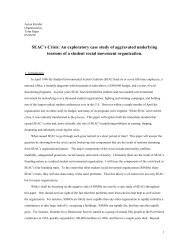
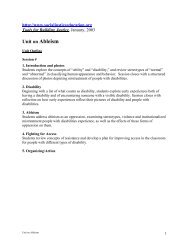

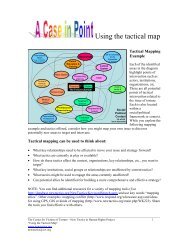
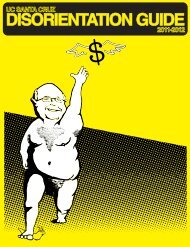

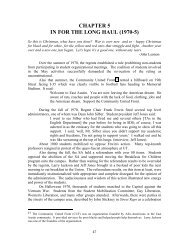
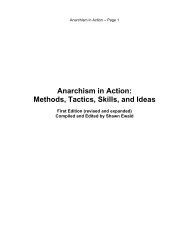



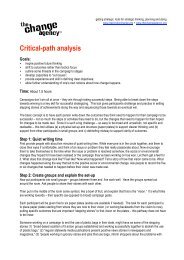

![Meaningful Student Involvement Research Guide [pdf] - SoundOut](https://img.yumpu.com/38822556/1/190x231/meaningful-student-involvement-research-guide-pdf-soundout.jpg?quality=85)